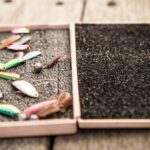Whether you are a professional fisherman or simply a hobbyist, you already know that worms are one of the most common baits used for fishing. Even in the modern-day when artificial baits and advanced lures have been invented, the appeal of real worms for fishing has not diminished.
How to Choose Bait
Worms have been used as bait for hundreds of years. The kind of worm you choose heavily depends on the type of catch you are targeting. When choosing your bait, there are some key differences between natural and artificial bait that you should know about. Nevertheless, fish are known to be attracted towards both. Here are simple steps to help you make a wise decision:
- Consider fish diet: Natural baits like worms can be used either alive or dead. Popular freshwater fishing bait includes worms, minnows, leeches, crickets, crayfish, and grasshoppers.
- Take size and color into account: It is vital to select a live bait suitable for the fish you intend to catch. A bait that is too large may alarm the fish, while a small bait may be go unnoticed.
- Consider the location: The bait you choose needs to be compatible with the water body in which you choose to fish. For instance, live saltwater fish are more likely to be attracted to a live bait than freshwater fish.
- Check out the weather: Fish behavior is heavily dependent on the weather. For example, cloudy weather may make it darker under the sea, which is when a darker bait would be more suitable.
- Consider the season: Changes in the season are bound to have an impact on the water temperature. Therefore, a faster-moving bait would be more appropriate for the summer, while a slower-moving bait would be preferable in wintertime.
Always remember that there is no guarantee that a fish will bite the prey. This is why the act is called fishing instead of catching! Nevertheless, adhering to these tips will considerably increase the probability of catching the fish of your choice.
Types of Fishing Worms
There are hundreds of worm species, with some being more common than others. Here is an overview of the popular types of fishing worms to help you decide which ones would be more suitable for the catch you are eyeing.
Nightcrawler Fishing Worms

These are one of the most popular worm varieties used for fishing. When you imagine a worm dangling at the edge of your fishing hook (Types of Fishing Hooks), you are likely to picture a nightcrawler.
These worms for fishing are typically quite large and are muddy brown to deep gray in color. If you are a fisherman interested in catching a large game fish, using a nightcrawler as bait may be your best bet. Their size makes them prominent enough to attract the interest of large fish.
If smaller fish are your target, you can divide a nightcrawler into multiple pieces. Any fish will attempt to eat a nightcrawler as long as the size is suitable for its mouth.
Another major advantage of a nightcrawler worm is that it tends to wiggle a lot at the end of the hook, which makes it rather attractive to many kinds of fish, such as catfish, trout, walleye, and smallmouth and largemouth bass.
Mealworms

These are the larval form of adult darkling beetle. Mealworms are either gold or red in color, and feature a hard outer shell.
They are known for their stability on the hook better than other larvae baits such as butter and wax worms. Mealworms can serve as effective baits for several smaller fish species. They are hardy and can be kept alive under almost all types of conditions. Mealworms are best for catching trout, bluegill, panfish, perch, and crappie.
Red Wigglers
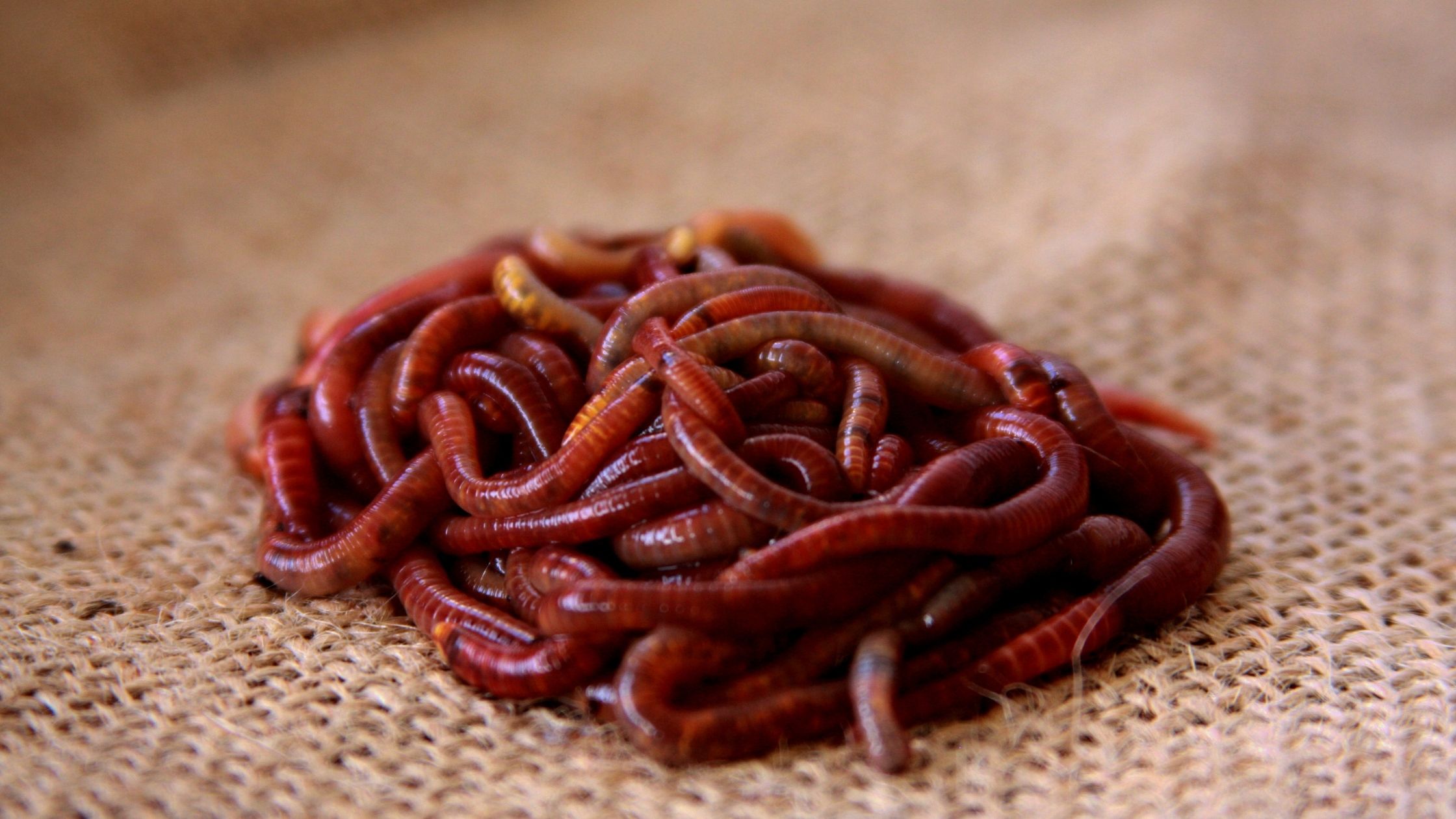
Red wigglers are also known as Belgian worms, euro worms, minis, and reds. It is essentially a tiny and slim worm that is most suitable for targets like trout and panfish.
As you may be able to guess, red wigglers get their name from their red color and wiggly movement. Their frequent movement easily gains the attention of fish.
They can be cared for without much hassle and can be used in fresh as well as brackish water. Although they are known for their small size, you can even find medium and large-sized red wigglers. These worms can even survive in extreme weather conditions, which makes them a popular choice among fishermen.
Leeches
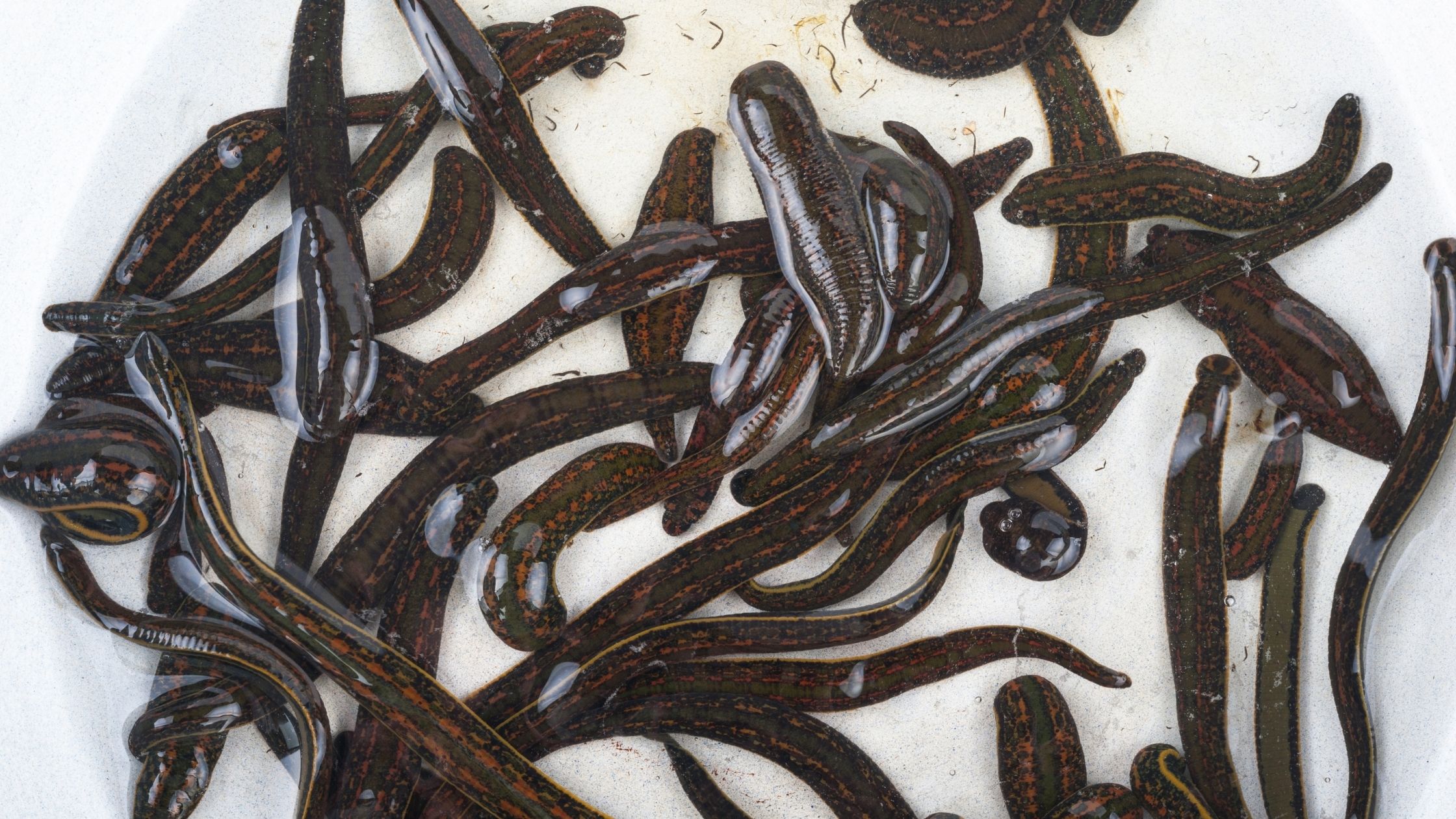
Leeches have been used for fishing purposes for hundreds of years. European anglers are known to use them along with klonk, which has proven to be quite effective.
Leeches are wriggly, cylindrical, and rather slimy. They are common natural food for fish and come in a variety of sizes. Larger leeches are best for catching catfish, walleye, and large bass. You can find leeches in different lakes, streams, and farm ponds.
Waxworms
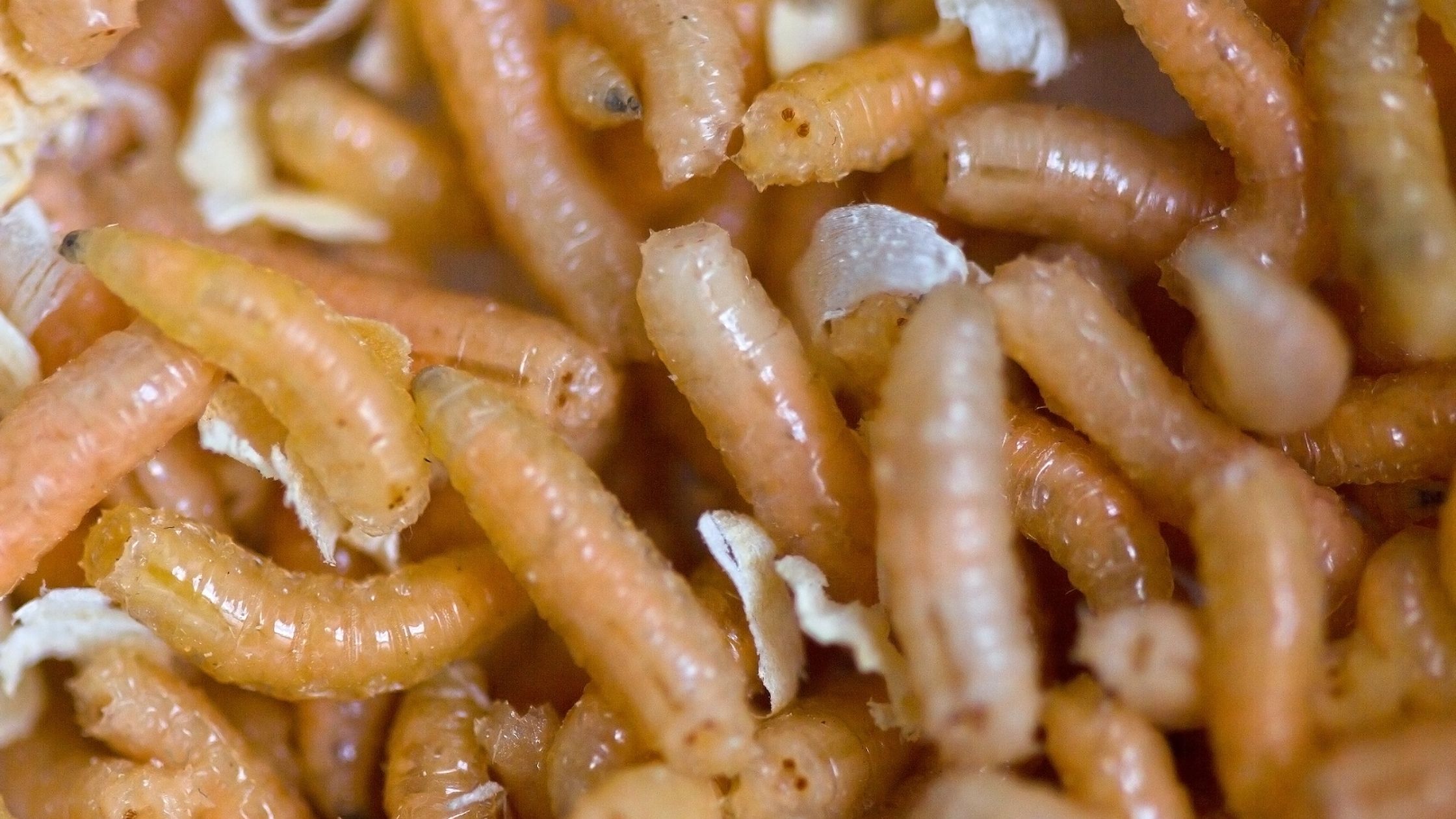
Waxworms are frequently used by anglers for catching most types of small fish. They are good for catching trout, panfish, perch, and crappie.
These worms for fishing are small and have a creamy white appearance. It may be hard to keep waxworms alive. If you want to store them for a week or more, it is best to keep them in a warm crisper or butter tray. Waxworms usually feed on their own body fat, so refrain from feeding them and keep them in a dry environment.
Bloodworms
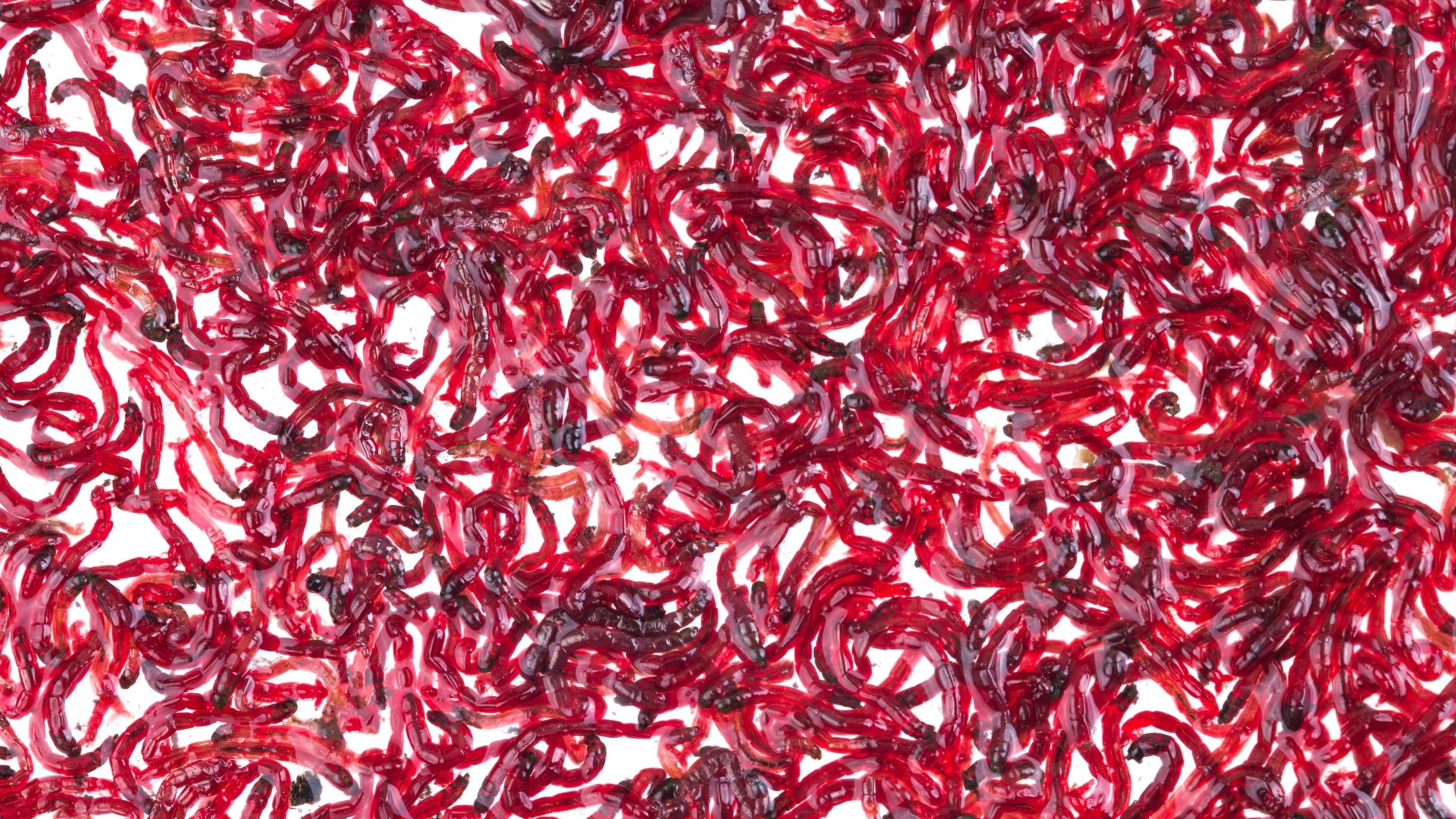
Bloodworms can be tiny as well as massive. Their larger size is more popular as it is used to catch larger fish. Beware while using bloodworms, as they have teeth and can bite you while you attempt to hook them on your line!
Bloodworms are generally used in saltwater and are ideal for catching fish, such as perch, porgys, bass, roach, and croaker. A major advantage of using bloodworms as bait is that they are hardy, and can even survive in polluted water bodies.
Butterworms
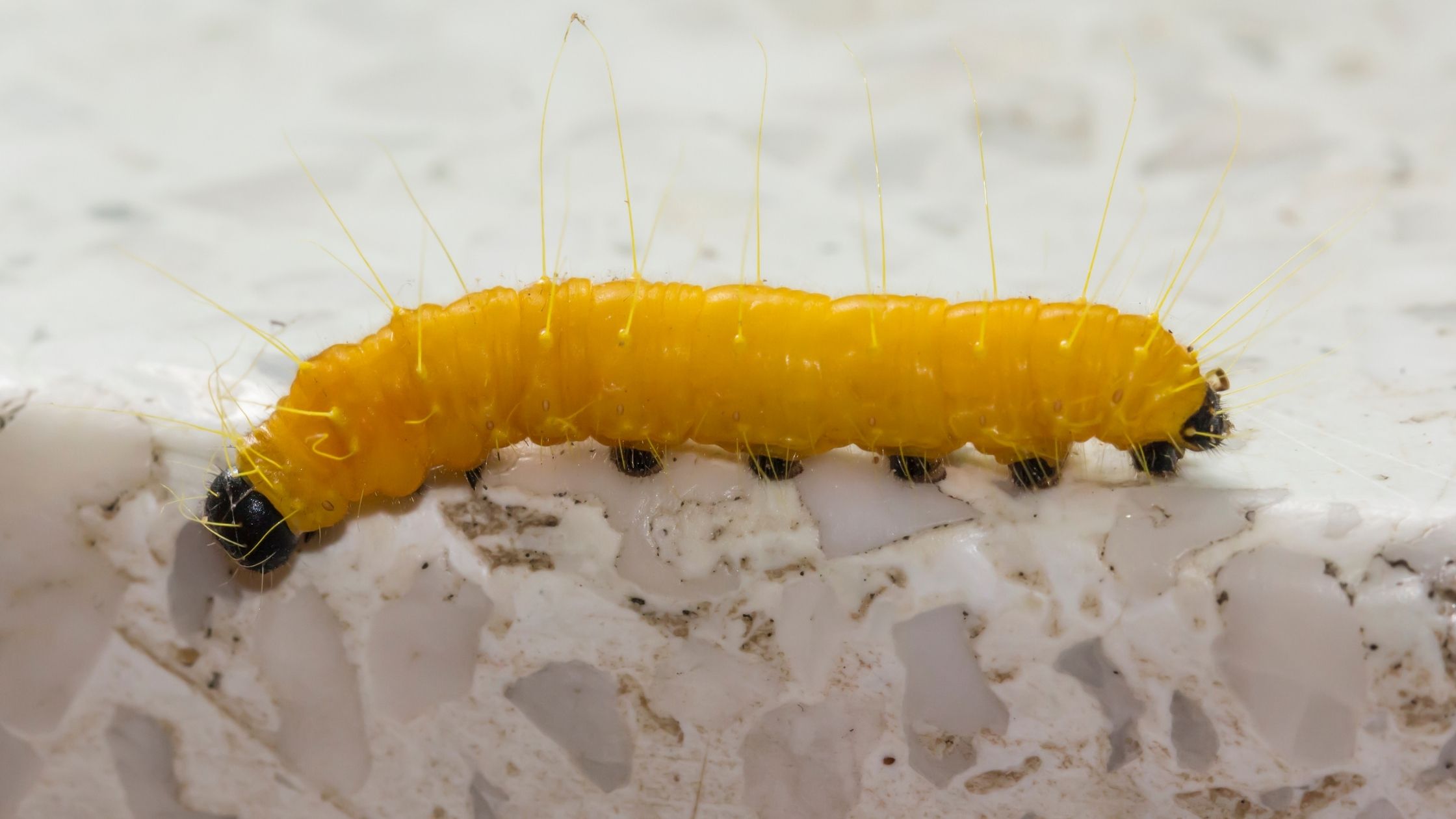
Like waxworms, butterworms are also a form of larvae. However, they contain more nutrition, which makes them a healthy alternative to waxworms. These worms for fishing are most suitable for catching panfish, trout, and catfish.
Butterworms are convenient to keep and can be handled cleanly. You can simply store them in a refrigerator for up to three months without the need to feed or water them. The only disadvantage of butterworms is that they cost more than red wigglers and some nightcrawlers.
Dillies
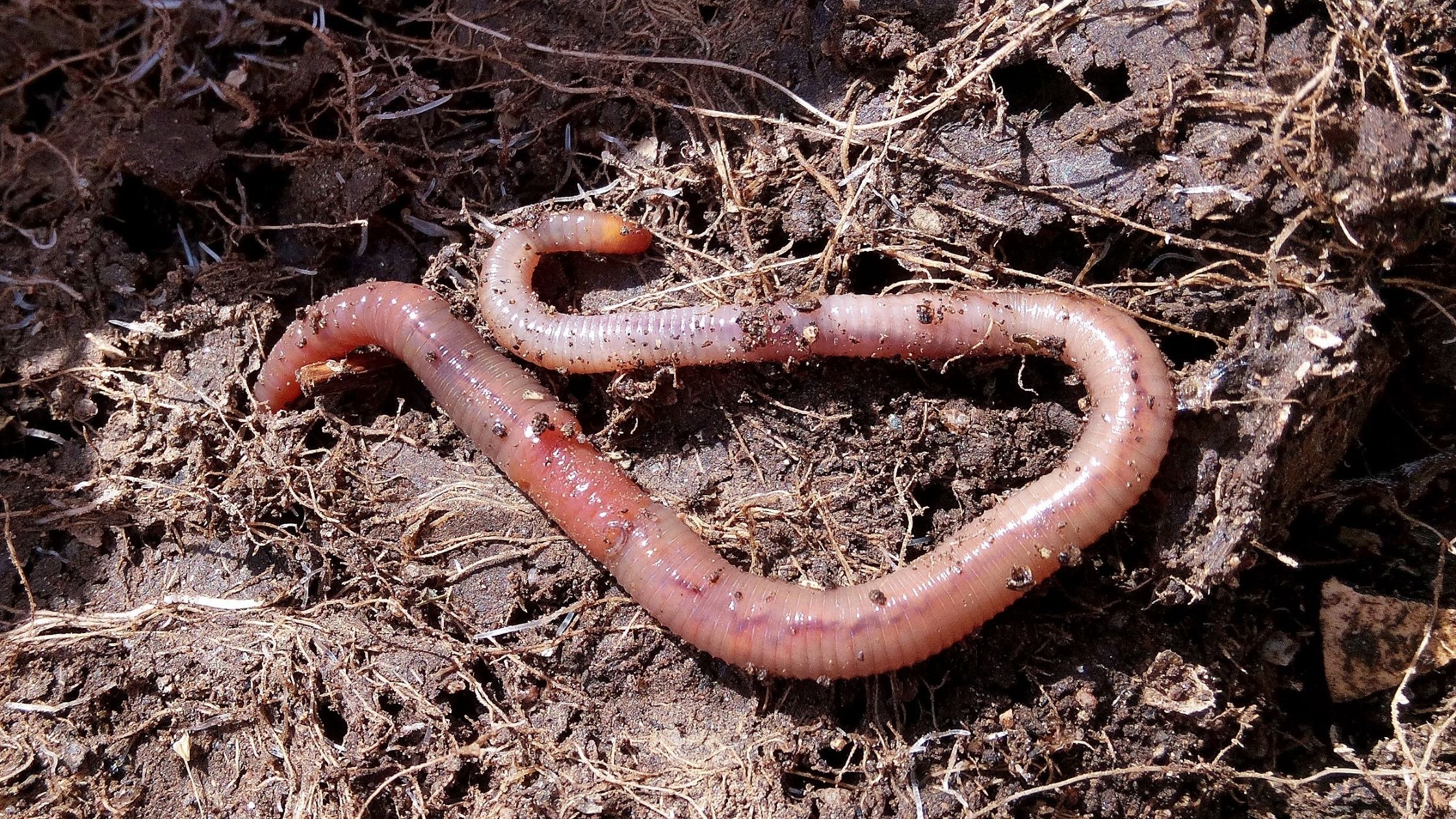
Dillies are a smaller version of nightcrawlers. They serve as a more convenient substitute while fishing for panfish with children, as you can use them one at a time.
Dillies are also known as earthworms, and you can find them in any backyard compost pile or a moist area consisting of decaying organic materials. Dry and hot conditions are usually fatal for these worms, so make sure you keep them in a container that is not exposed to direct sunlight.
Spikes
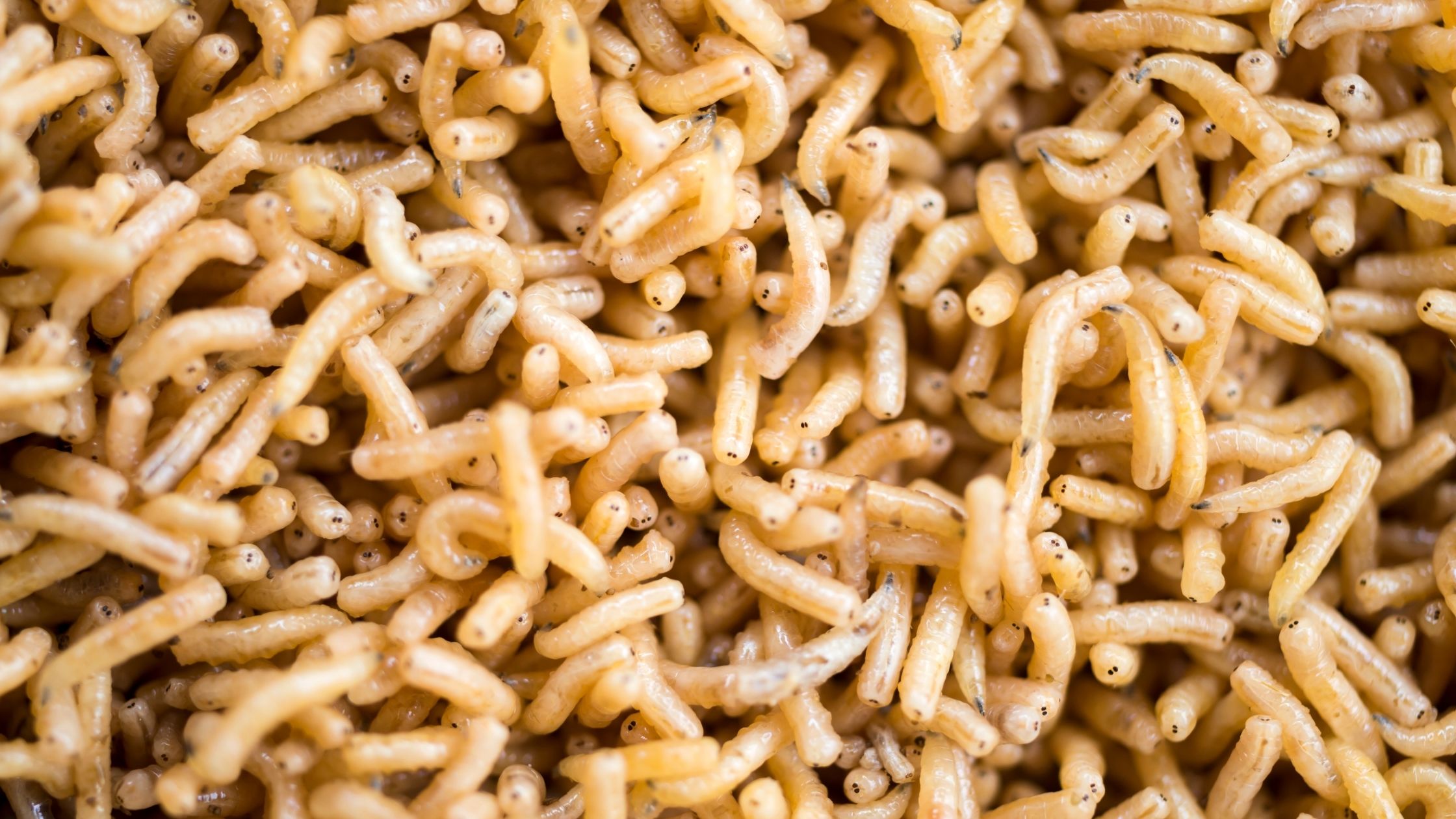
Spikes are essentially maggots. It is best to use them as bait in cooler water, particularly in the spring or winter season. Trout anglers and ice fishing anglers often use spikes for catching panfish.
Spikes are affordable worms for fishing and are abundant in supply. They are protein-packed, making them nutritious food for fish. Maggots are the larval form of flies and are available in different sizes. They are typically creamy white, but colored ones are also available in the market these days.
Artificial Worms
While there is a wide range of live worms for fishing, you can also check out artificial ones. They have the benefit of being inexpensive and easy to store. Here are 4 main kinds of artificial worms you can choose from:
Ribbon Tails
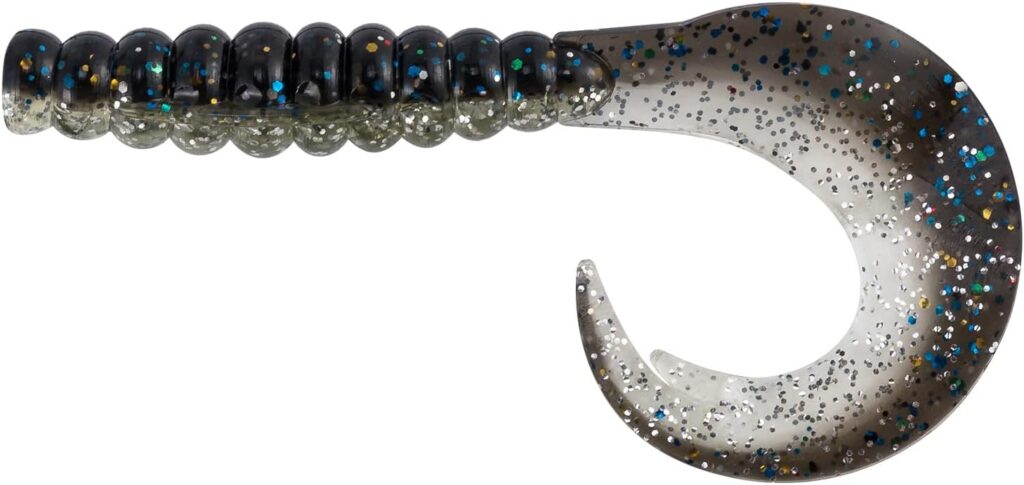
They have good results following the spawning season through the summer. Use ribbon tail worms when fishing in brush or grass. The tails of these worms mimic the swimming action of baby snakes, making them a good option for southern lakes.
Paddle Tails

Paddle tail worms are excellent for grass-filled lakes or any other water body containing lily pads or matted grass. They are best for swimming over vegetation. Paddle tail worms are most suitable for catching salmon, walleye, trout, northern pike, and smallmouth and largemouth bass.
Curly Tails
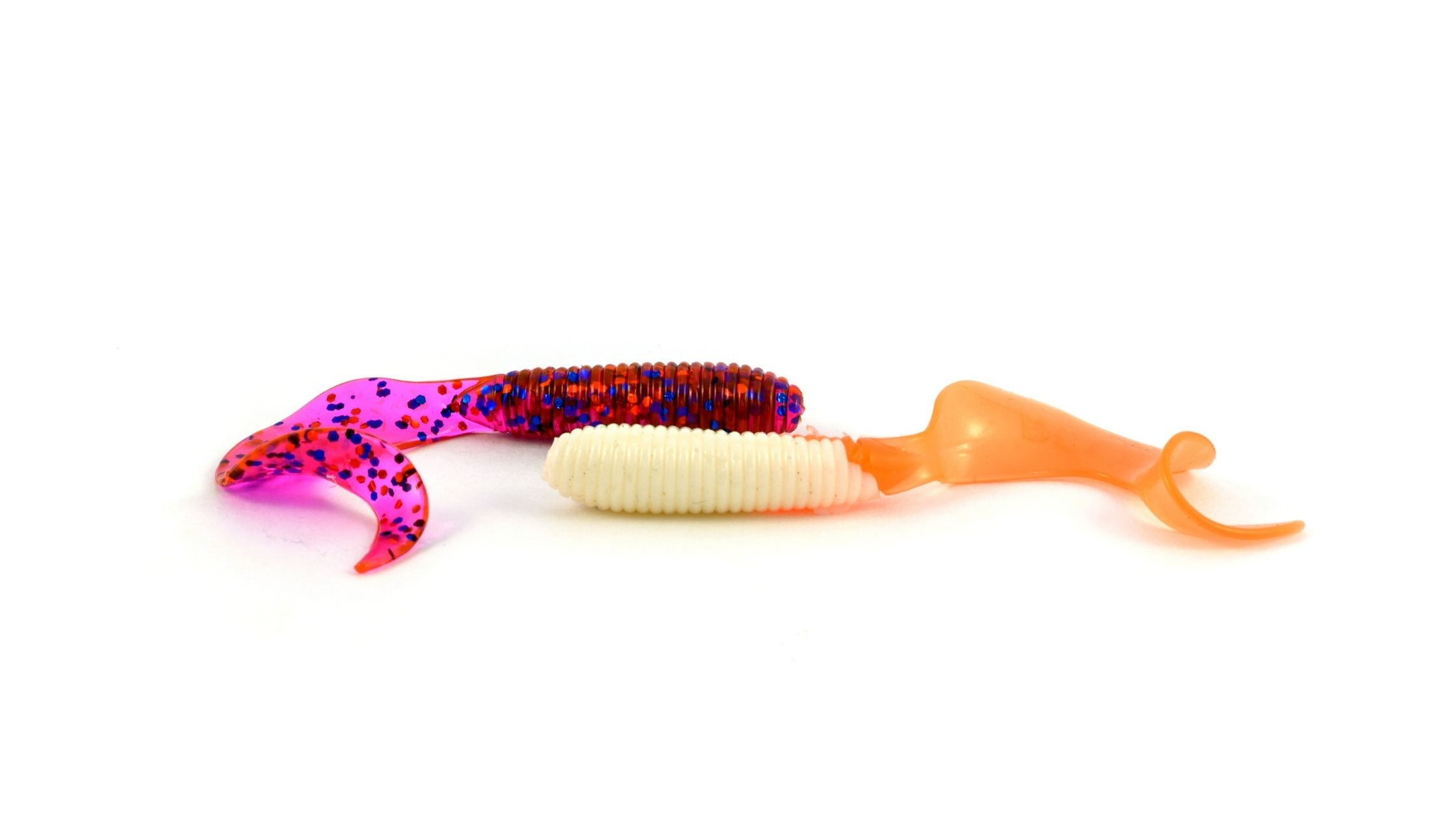
Curly tails are large, ribbon-tailed worms for fishing that are quite popular for catching spotted bass, walleye, muskie, and northern pike. They have the advantage of resting well on a variety of different rigs, such as jighead rig, shaky jighead rig, Carolina rig, Texas rig, and split shot rig.
Straight Tails

These are also known as “finesse worms” and generally need more patience to work with. They resemble freshly dug worms and appeal to most types of fish. Straight tails are especially effective during summertime when fish pressure and boat traffic are high.
How do you keep bait cool?
Embarking on a successful fishing trip requires not only skill but also the right preparation. A critical part of this preparation is keeping your bait cool and alive. Here’s how to do it with care and professionalism.
Start by storing your bait in a cooler, find a good backpack cooler for fishing, or look for the Best Cooler for Fishing. This simple step helps to maintain a consistent, cool temperature, which is crucial for the bait’s survival. During those warmer months, adding an ice pack to the water can help keep temperatures down. But remember, moderation is key – you don’t want to chill the water too quickly or too much. Aim for a temperature 5 to 10 degrees lower than the water where you caught the bait.
Oxygenation is another essential aspect of keeping your bait alive and active. Using an aerator can help maintain high oxygen levels in the water. Did you know that adding ice or snow can also increase the water’s oxygen-carrying capacity? That’s because colder water holds more dissolved oxygen.
When selecting a container for your bait, go for a bucket that’s large enough to hold plenty of water and bait without causing overcrowding. Overcrowded conditions can stress the bait, reducing their lifespan.
And finally, keep the water fresh and clean by changing it regularly. By following these steps, you’ll not only keep your bait cool but also lively and alive, setting the stage for a rewarding fishing trip. Happy fishing!
Final Thoughts on Types of Fishing Worms
There is a large variety of worms for fishing. The kind you choose heavily depends upon the type of catch you are targeting. First, make sure you check the fishing regulations in your area to know whether the bait of your choice is legal.
Some of the main benefits of choosing live bait are that they have a strong scent that attracts fish and is easy for the fish to eat. However, if you find them too messy or difficult to maintain, you can opt for artificial bait. They help you save money as you can use them multiple times. They are also cleaner and more convenient to use.


